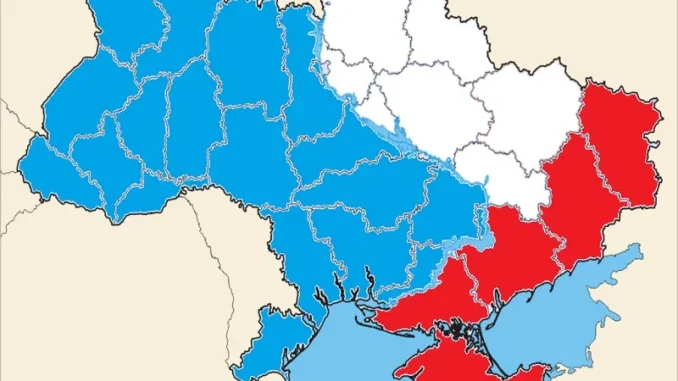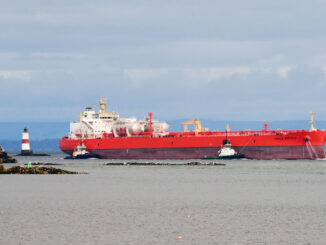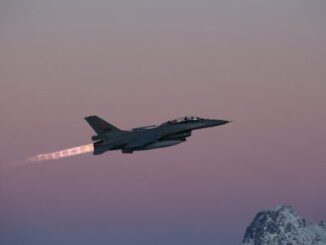
If the military-strategic dynamics remain on track and the West is still led by “rational” leaders with an interest in preventing a nuclear apocalypse, then President Putin’s “sanitary/security zone” could lay the basis for a potential compromise aimed at responsibly managing Ukraine’s asymmetrical partition.
President Putin declared in his re-election speech early Monday morning that Kiev’s cross-border terrorist raids and use of long-range Western weaponry to strike deep into Russian territory could “force” his country to establish a “sanitary zone” that he also described as a “security zone”. He first spoke about this in January, which was analyzed here, and his latest remarks follow former President and incumbent Deputy Chair Security Council Chairman Medvedev’s talk about Russia’s “strategic borders”.
The larger context within which this scenario is being contemplated is the prospect of a conventional NATO intervention in Ukraine via a “coalition of the willing” that would likely be led by France, the UK, and Poland if it happens with the predictable participation of the Baltic States as well. At the same time, CNN, the Wall Street Journal, and the Washington Post all finally admitted that Russia won the “race of logistics” with NATO after the New York Times was the first to acknowledge this last September.
In other words, the “worst-case scenario” from Kiev’s perspective might soon materialize whereby Russia’s lead in the “race of logistics” results in a breakthrough across the Line of Contact (LOC), which could prompt the “worst-case scenario” from others’ perspective of a conventional NATO intervention. The risks of sparking World War III by miscalculation would spike unless there’s a tacit understanding between NATO and Russia over how far west and east each would respectively go in that scenario.
Therein lies the importance of President Putin once again bringing up the possibility of establishing a “sanitary/security” zone in Ukraine since a compromise could be for the Ukrainian Armed Forces (UAF) to carry out as orderly of a retreat as possible over the Dnieper if Russia breaks through the LOC. Russia would then go as far as the administrative borders of its newly reunified regions short of crossing the Dnieper while NATO would stay west of the Dnieper as peace talks resume to formalize this deal.
In that way, the risks of World War III being sparked by miscalculation could remain minimal, while the US and Russia could then hash out the details of Ukraine’s asymmetrical partition. NATO would establish a “sphere of influence” over the western half of the country, the West would tacitly accept Russia’s control over the four former Ukrainian regions that reunified with it in September 2022, while the rest of eastern Ukraine would remain under Kiev’s political control but become a demilitarized buffer zone.
The merits of this proposed compromise are that it meets some of each side’s interests but leaves space for the other party to agree to this by not accomplishing either of their maximalist goals. Russia secures its newly reunified regions and establishes a sanitary/security zone in the rest of eastern Ukraine, while Kiev clings to the alleged “legitimacy” of its pre-2014 borders and NATO formalizes its presence in the country. NATO and Russia would then balance each other along the new LOC and the Belarusian border.
Russia would have the advantage in the event that the Korean-like armistice that former NATO Supreme Commander James Stavridis suggested last November is broken since the demilitarized region in eastern Ukraine directly abuts Belarus, pre-2014 Russia, and its newly reunified territories in the south. Therein lies the reason for formalizing NATO’s presence in the western half of the country in order to reassure the bloc that Russia wouldn’t exploit this position to strike first lest they then retaliate in Belarus.
President Putin also acknowledged the presence of NATO forces in Ukraine during his re-election speech, hence the proposal for formalizing this in a way that reduces the risks of World War III by miscalculation such as if they conventionally intervened in a “Race to the Dnieper” if the LOC collapses. This could happen in parallel with the UAF retreating as orderly as possible over the Dnieper to demilitarize the rest of the eastern Ukraine in that event while Russia stays within its new regions’ borders.
This plan is admittedly dependent on: 1) an impending Russian breakthrough across the LOC; 2) that in turn prompts NATO to participate in a “Race to the Dnieper”; 3) which could raise the risks of World War III being sparked by miscalculation in a sequence of events that no responsible policymaker wants. It could of course be that no such breakthrough occurs, NATO doesn’t conventionally intervene if one does, or it intervenes with the intent of “escalating to de-escalate” by openly flirting with World War III.
If the military-strategic dynamics remain on track and the West is still led by “rational” leaders with an interest in preventing a nuclear apocalypse, then President Putin’s “sanitary/security zone” could lay the basis for a potential compromise aimed at responsibly managing Ukraine’s asymmetrical partition. A trusted mediator like the Pope and/or India should be relied upon by Russia to probe the West’s interest in this, which the US might be receptive to as it prepares to “Pivot (back) to Asia” to contain China.



